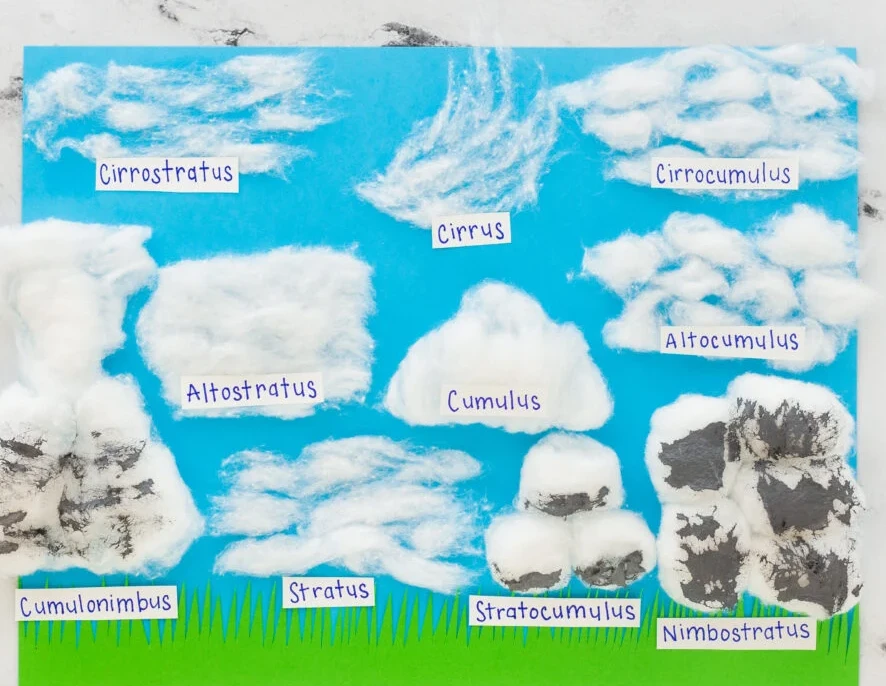The phenomenon of cumulus clouds, often likened to whimsical cotton balls strewn across the azure vault of the sky, offers a compelling case for the intersection of meteorological science and cultural interpretation. To approach the understanding of cumulus formations through the lens of cultural relativism invites a rich tapestry of interpretations, challenging the observer to consider how diverse societies ascribe meaning and significance to these atmospheric constructs. This exploration reveals an intricate relationship between natural phenomena and the human psyche, shaped by environmental, historical, and cultural contexts.
Cumulus clouds are a fundamental component of the Earth’s atmosphere, characterized by their fluffy, white appearance and cotton-like texture. Scientifically, they form as warm air rises, cools, and condenses into visible water droplets. This process, while well understood in the realm of meteorology, reveals layers of cultural significance that vary widely across different societies. Observers across cultures interpret these puffy formations in varied ways, underscoring the theme of cultural relativism—the idea that beliefs and practices must be understood in their own cultural context.
In Western contexts, cumulus clouds often evoke feelings of nostalgia and innocence, reminiscent of youth, playfulness, and imagination. These clouds are frequently associated with fair weather, symbolizing tranquility and optimism. Children, in particular, are drawn to their softness, cloud-gazing and engaging in a delightful game of identifying animal shapes among the billowy forms. This engaging quality of cumulus clouds has ignited the creativity of poets and artists, symbolizing the ethereal nature of childhood dreams.
Conversely, in certain Indigenous cultures, clouds—especially cumulus—carry profound spiritual significance. For instance, in various Native American beliefs, they are considered to be the manifestations of ancestral spirits or deities, conveying messages and life lessons to the living. Such interpretations reveal the cumulus cloud not merely as a meteorological event but as a conduit of cultural narratives and spiritual connections. By understanding these perspectives, one perceives the cloud not just as a visual feast but as a symbol of communal heritage intertwining the natural and the mystical.
The unique appeal of cumulus clouds also lies in their associated myths and folklore. In numerous cultures, stories are woven around the presence of clouds. The Scandinavian belief that clouds are the home of benevolent spirits contrasts sharply with the African mythologies where clouds carry the stories of ancestors, providing weather and fertility guidance. This duality illustrates how cumulus clouds can function as a metaphorical bridge between the terrestrial and celestial, signifying the close-knit relationship of communities with their environment. The clouds serve as reminders of the delicate balance between humanity and nature, embodying the essence of cultural invocations.
In terms of literary imagery, cumulus clouds often serve as a metaphor for optimism and fleeting beauty. Writers employ this imagery to evoke a sense of transient joy or the ephemeral nature of life. This imaginative portrayal resonates with people across cultures, drawing a universal thread connecting diverse experiences and emotions. For instance, in various Eastern philosophies, clouds are considered to represent the constantly changing nature of life, reflecting the impermanence of existence—a concept central to Buddhist teachings.
Moreover, the cumulus cloud, through its morphology, provokes questions of perception and interpretation. To an agriculturist, it might represent impending rain and therefore a potential boon for crops. Yet, to a traveler or sailor, the same cloud formation may elicit feelings of caution, foretelling turbulent weather. This duality reinforces the idea that interpretation is fundamentally subjective, influenced by one’s socio-economic background and present circumstances. Such relativity in meaning further emblematizes the diverse tapestry of human experience where cumulus clouds become a canvas for projecting hopes, fears, and aspirations.
As climate change becomes an increasingly pressing issue, the cumulus cloud also serves as a metaphor for the broader dialogues surrounding environmental stewardship and sustainability. Cultural interpretations of cloud formations can motivate action, fostering a sense of responsibility towards ecological preservation. Communities around the world are beginning to share narratives that link observations of atmospheric phenomena, like cumulus clouds, with discussions on climate variability, urging collective action to combat environmental degradation. This evolution in perception highlights the dynamic nature of cultural understanding, illustrating how traditional views of clouds evolve in the face of modern challenges.
The intricacy of cumulus clouds, both scientifically and culturally, frames them as more than mere meteorological events. They are symbols of the human experience, underscoring the profound intersection of nature and culture. The soft, comforting appearance of these clouds evokes emotions that transcend cultural boundaries, while their varied interpretations reveal the depths of human understanding and imagination.
In conclusion, the cultural relativism lens through which we explore cumulus formations unveils a wealth of meanings, each as diverse and vibrant as the clouds themselves. Cumulus clouds, with their fluffy semblance to cotton balls, have transcended their meteorological simplicity to become profound symbols within myriad cultural narratives. These clouds invite us to contemplate our place in the cosmos, urging us to recognize and celebrate the intricate connections between nature and culture. Through their ever-changing forms and meanings, clouds remain an enduring fascination, capturing the imagination of diverse cultures throughout history.
